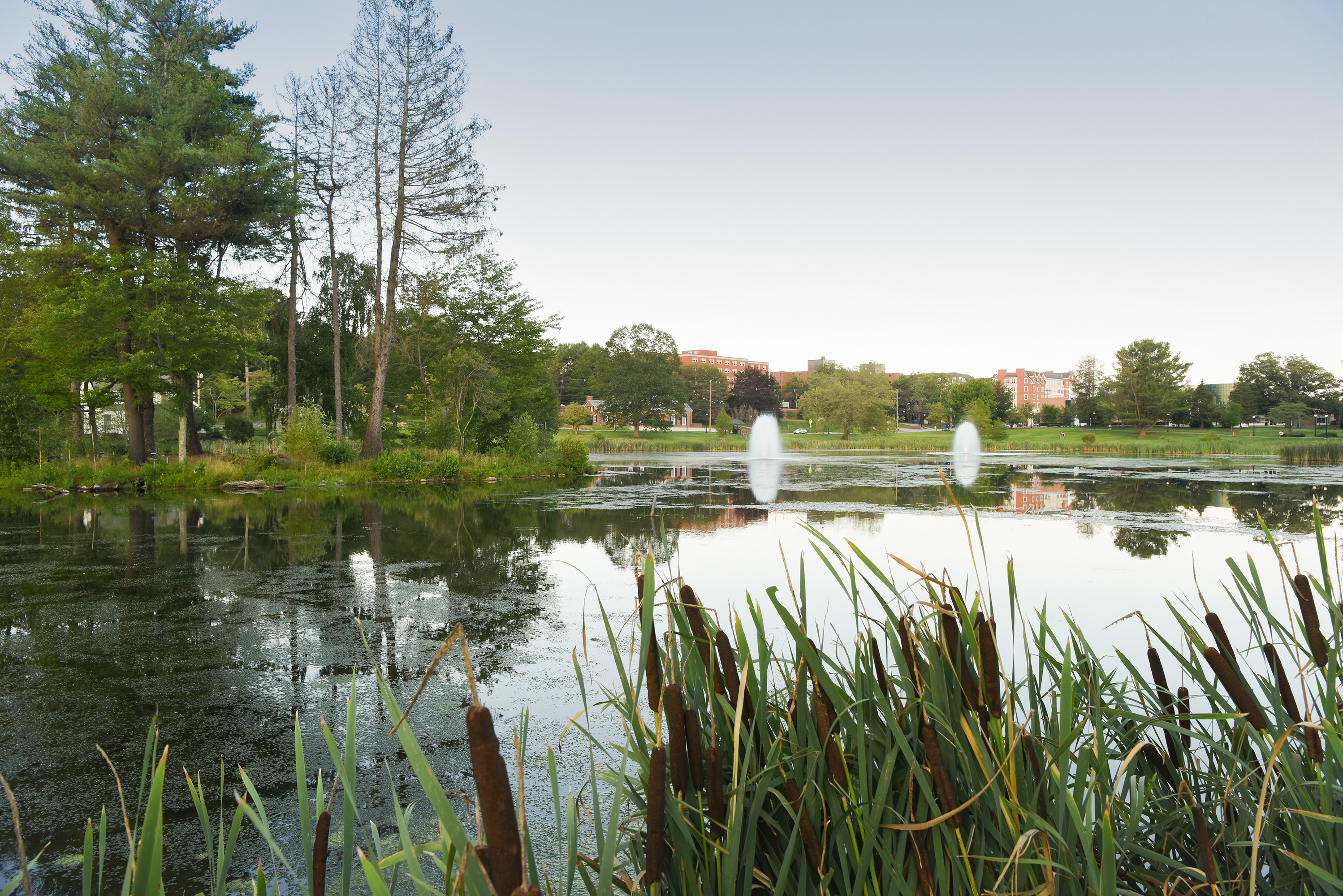UConn is redesigning its project to improve Mirror Lake to address flooding and stormwater runoff concerns, holding off for now on dredging that had been planned to deepen it by removing decades’ worth of built-up muck.
The Board of Trustees this month approved funding to revise the project’s design, which will entail improvements determined in consultation with the state’s Department of Energy and Environmental Protection.
They will focus on two safety and compliance elements: improvements and/or repairs to Mirror Lake’s dam and spillway, which pose flooding hazards during heavy rain; and stormwater control and water quality improvements associated with construction of the nearby South Campus Residence Hall and related infrastructure work.
Mirror Lake is visibly shallow, murky, and weedy during periods of the year, and contains several feet of organic muck and sediment from the 50 years of development on and off campus nearby. Stormwater runoff from its 165-acre Roberts Brook watershed, which includes non-UConn property, has flowed toward the lower-lying lake for nearly 100 years, impacting water quality and increasing the volume.
UConn originally had planned to also dredge the lake to help maintain its existing footprint during storm events and reduce the need to increase the height of the dam that would be necessary for flood control and dam safety. However, it decided to reduce the scope amid University-wide budget constraints.
The work is expected to begin in August 2024 once the design, permitting, and construction bidding processes are complete, and to conclude within about one year.
Unlike UConn’s Swan Lake to the north, Mirror Lake isn’t a natural water body. It originally was a marshy meadow just off campus when UConn began as the Storrs Agricultural School in 1881, and later became part of the institution’s property.
By 1910, landscape architects already were proposing turning it into a human-made lake, both as an aesthetic feature and landmark of the central campus, and to find an appropriate use for the otherwise swampy, insect-friendly marsh.
Around 1922, the wooden dam on the marsh’s northern side was removed, a new soil dam was created, and about four acres were flooded to create Mirror Lake. It was fully dredged in 1946 and partially dredged in 1970, but sediment from stormwater runoff has made it continuously shallower and excrement from geese, gulls, and ducks, and other pollutants have affected the water’s quality.
UConn conducts annual maintenance programs, including cleaning and treatments, to combat algae growth. The addition of two fountains has also helped mitigate some of the algae blooms, although those fountains are currently inoperable because their electrical connection is sourced near the adjacent fire-damaged Whitney House.
However, the capacity of Mirror Lake has been so greatly reduced by sediment that during heavy rainfalls, water occasionally flows over the banks of the brook originating at the dam’s spillway, becoming temporarily impounded at downstream culverts.
UConn took over dam inspection and assessment processes in 2016 from DEEP due to changes to Connecticut dam safety regulations.
After its 2019 assessment, Mirror Lake’s dam was deemed a higher safety hazard than before, moving it into a hazard class defined by DEEP in which failure would result in probable life/safety issues and impacts to Route 195, secondary roads, and other downstream impacts.
UConn conducts regular maintenance, including temporary repairs enacted in 2020 to the dam’s spillway and surrounding area.
The planned work would help resolve the flooding issues, although University officials acknowledge dredging and site improvements that were planned around the lake will need to be revisited when capital budget funding allows it.



